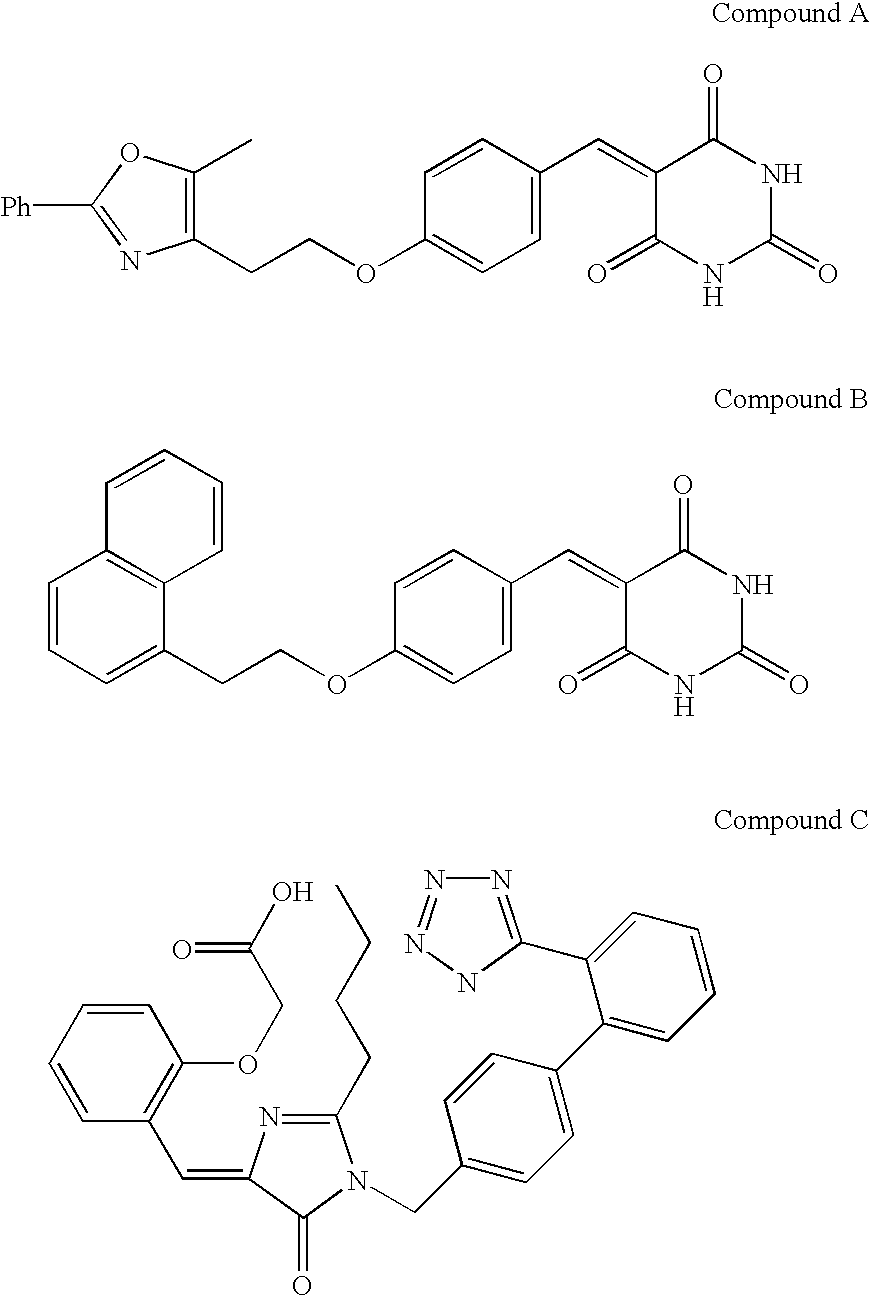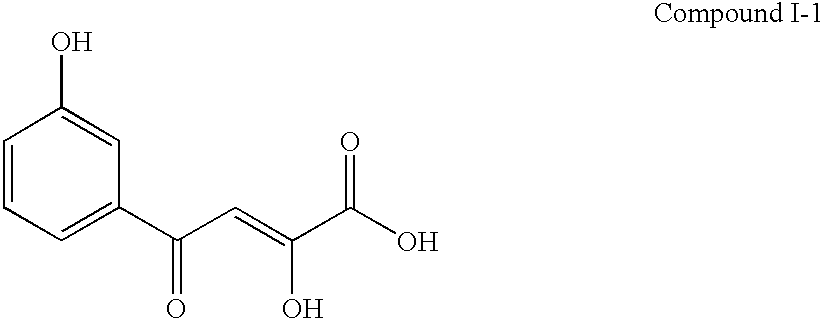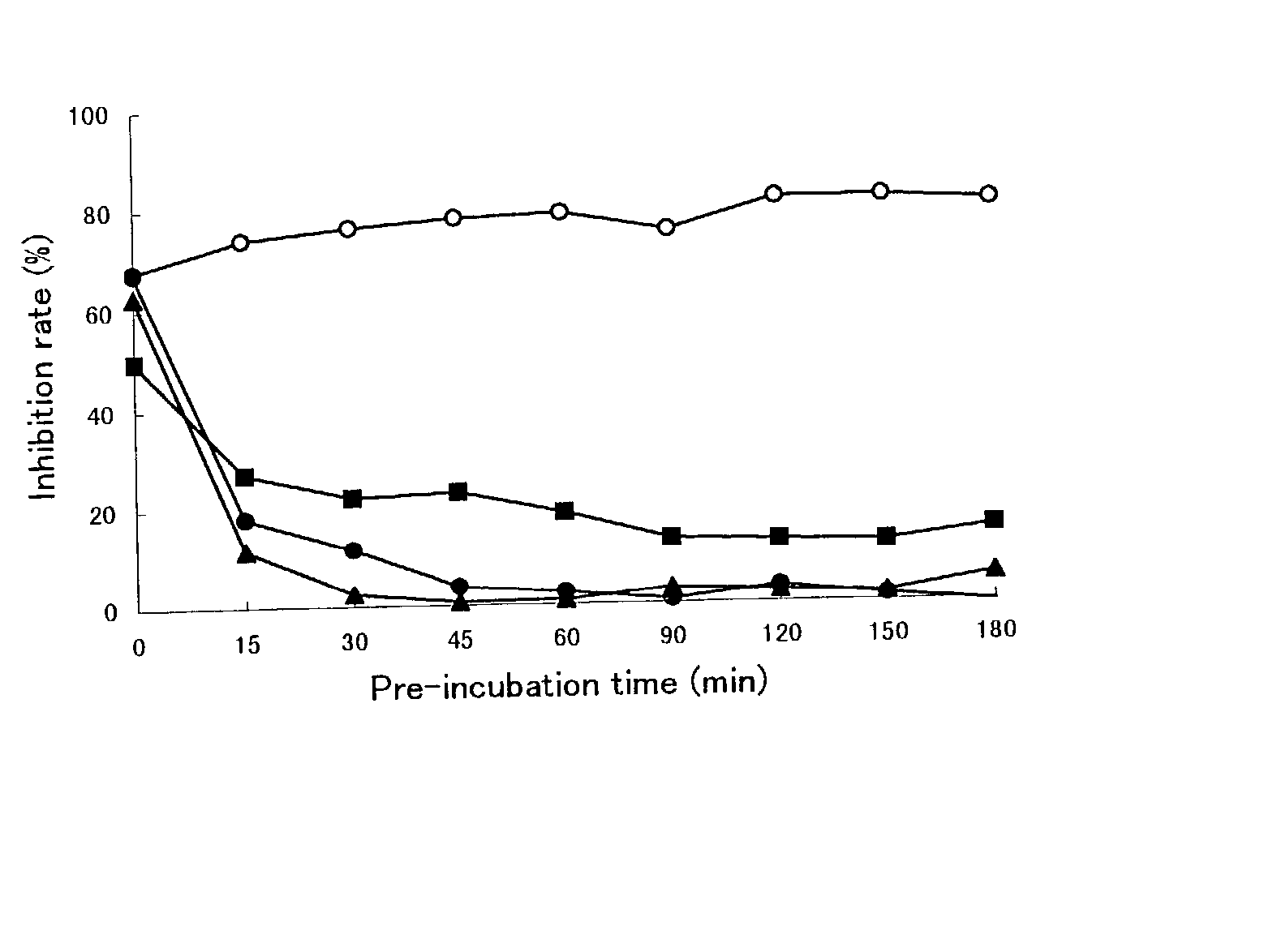Preincubation assay methods
- Summary
- Abstract
- Description
- Claims
- Application Information
AI Technical Summary
Benefits of technology
Problems solved by technology
Method used
Image
Examples
example 1
[0111] The Assay Method with Pre-Incubation Using HCV RNA-Dependent RNA Polymerase
[0112] 1) The buffer I .sup.1) (10.5 .mu.l) containing Tris-HCl (100 mM, pH 7.5), MgCl.sub.2 (25 mM), dithiothreitol (5 mM), KCl (125 mM) and ethylenediaminetetraacetic acid (5 mM) was transferred to a polypropylene tube and then poly(A).sup.2) solution (100 .mu.g / ml, 10.5 .mu.l), oligo(U).sub.12 .sup.3) solution (1 .mu.g / ml, 10.5 .mu.l) and water (8 .mu.l) were added into the tube and mixed.
[0113] 2) Next, HCV RNA-dependent RNA polymerase (10.5 .mu.l) was added into the tube and pre-incubated at 25.degree. C. for 60 ml.
[0114] 3) The enzyme solution pre-incubated (50 .mu.l) was added to a test compound (5.26 .mu.l / well) dissolved with dimethyl sulfoxide or water in a well of a 96-wells microtiter plate.
[0115] 4) Additionally, the buffer II (10.6 .mu.l) containing Tris-HCl (100 mM, pH 7.5), MgCl.sub.2 (25 mM), dithiothreitol (5 mM), KCl (125 mM), ethylenediaminetetraacetic acid (5 mM) and UTP
[0116] 4) (...
example 2
[0163] The assay method with pre-incubation using HCV RNA-dependent RNA polymerase without radioisotope-labeled substrate.
[0164] In Example 1, 3H-UTP, that is UTP labeled with tritium as radioisotope was used as substrate in the assay with pre-incubation using IICV RNA-dependent RNA polymerase. Herein, digoxigenin-labeled UTP (DTG-UTP) instead of .sup.3H-UTP was used as substrate in the assay with pre-incubation using HCV RNA-dependent RNA polymerase.
[0165] 1) Streptavidin (1 mg / ml) was dissolved in the phosphate buffer saline (PBS) containing NaCl (0.137 M), KCl (2.68 mM), potassium dihydrogenphosphate (1.47 mM) and sodium phosphate (8.06 mM).
[0166] 2) The streptavidin solution was diluted 25-fold with the carbonate buffer containing sodium carbonate (0.9 M) and sodium hydrogencarbonate (0.1 M).
[0167] 3) The 25-fold streptavidin solution (50 .mu.l / well) was transferred to a well of 96 wells-microtiter palate with flat bottom for immunoassay and then the plate was kept at 4.degree. ...
PUM
| Property | Measurement | Unit |
|---|---|---|
| Time | aaaaa | aaaaa |
| Angle | aaaaa | aaaaa |
| Angle | aaaaa | aaaaa |
Abstract
Description
Claims
Application Information
 Login to View More
Login to View More - R&D
- Intellectual Property
- Life Sciences
- Materials
- Tech Scout
- Unparalleled Data Quality
- Higher Quality Content
- 60% Fewer Hallucinations
Browse by: Latest US Patents, China's latest patents, Technical Efficacy Thesaurus, Application Domain, Technology Topic, Popular Technical Reports.
© 2025 PatSnap. All rights reserved.Legal|Privacy policy|Modern Slavery Act Transparency Statement|Sitemap|About US| Contact US: help@patsnap.com



